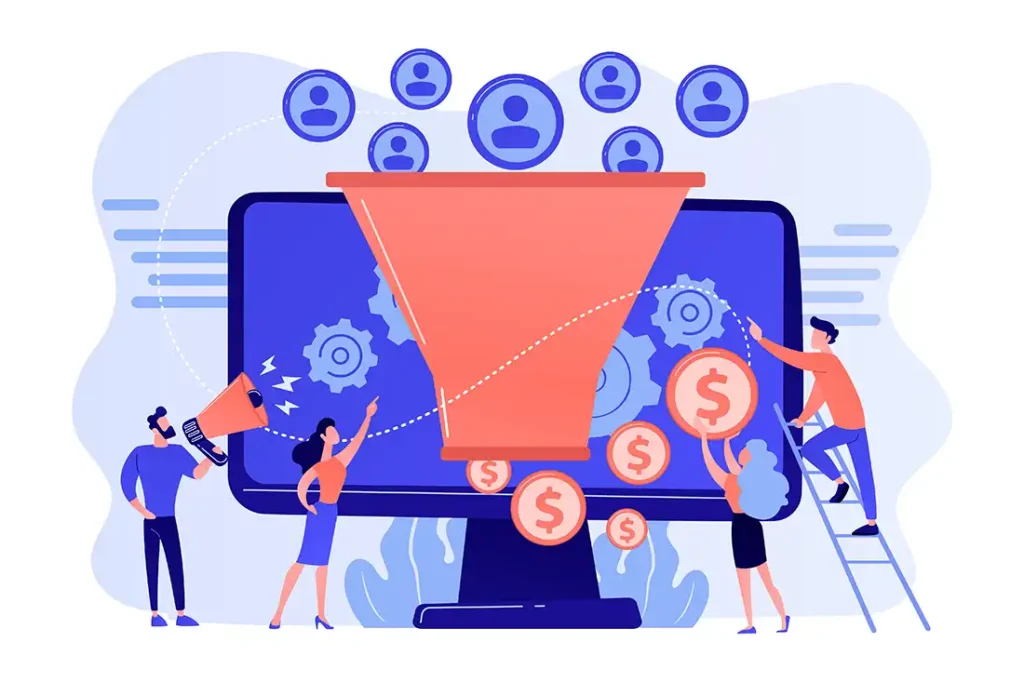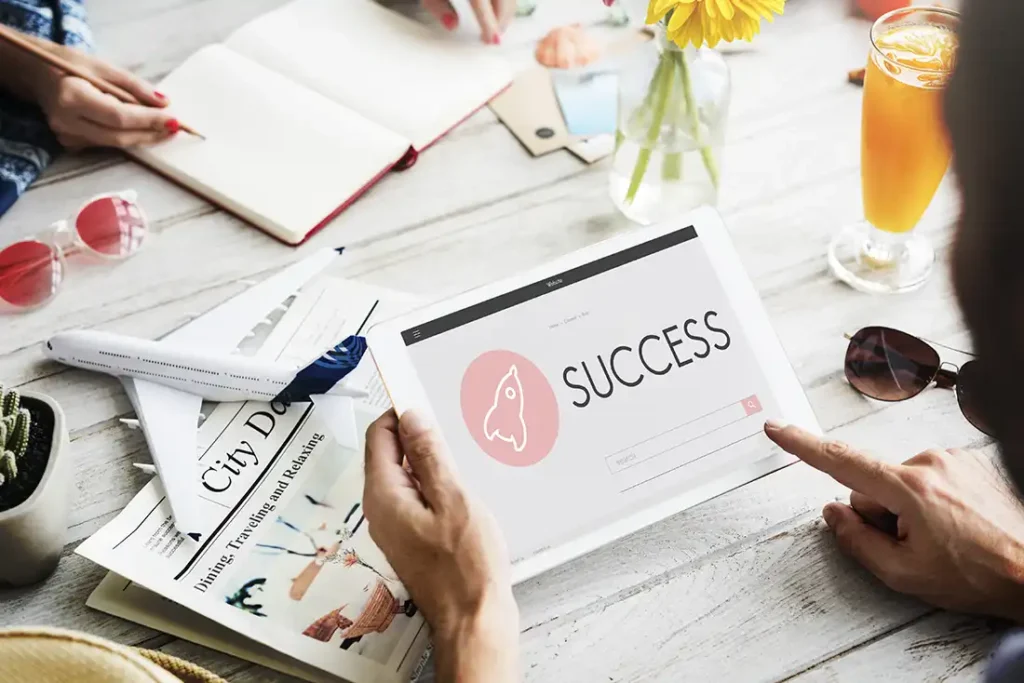Here’s the thing about lead generation funnels: they’re not rocket science, but they’re also not a “set it and forget it” deal. If you’re still using the same funnel tactics from 2022, you’re probably leaving money on the table.
The good news? Lead generation is more effective than ever. Companies using modern funnel strategies are seeing 30-40% conversion rate improvements, and email marketing still delivers an incredible $42 return for every dollar spent. Let me walk you through exactly how to build a winning funnel that actually converts in 2025.

Think of a lead generation funnel like a friendly conversation with a potential customer. You’re not trying to sell them something right away. Instead, you’re building trust, providing value, and gently guiding them toward a purchase decision.
A lead funnel is basically your marketing system that turns strangers into customers. It captures people who don’t know you yet, nurtures them with helpful content, and converts them into paying customers over time.
The best part? Modern funnels are smarter than ever. With AI-powered personalization and automation, you can create experiences that feel custom-made for each visitor.
This is where people first discover you exist. They have a problem but might not even realize it yet. Your job here is to be helpful, not salesy.
What works in 2025:
The key is creating content that makes people think “wow, these folks really get it.”
Now they know they have a problem and you might be able to help. This is where you prove your expertise without being pushy about it.
What’s crushing it right now:
Segmented email campaigns are driving 30% more opens and 50% higher click rates than generic blasts. Personalization isn’t just nice to have anymore—it’s essential.
This is where you actually ask for the sale. But if you’ve done the first two stages right, it shouldn’t feel pushy.
Modern conversion tactics that work:
Here’s a stat that’ll blow your mind: Only 27% of B2B leads are sales-ready when first generated. The companies crushing it are the ones that nurture the other 73%.

You can’t create a funnel that converts if you don’t know who you’re talking to. And I mean beyond basic demographics.
What you need to figure out:
Use tools like surveys, customer interviews, and social media listening. The goal is to understand their world so well that when they read your content, they think “did they read my mind?”
Pro tip: Companies using detailed buyer personas see 73% higher conversion rates than those who don’t.
Forget the generic 20-page PDFs nobody reads. In 2025, short-form content is winning. Here’s what’s working:
Interactive content is king:
Quick reality check: Lead magnets with interactive elements convert 67.2% higher than static downloads. Your audience wants to engage, not just consume.
Video content is exploding too. Landing pages with videos see an 86% increase in conversions. A simple 60-second tutorial often outperforms a lengthy whitepaper.
Your landing page has one job: turn visitors into leads. The average landing page converts at 6.6%, but the best ones hit 27% or higher.
What makes the difference:
Here’s something cool: Long-form landing pages generate 220% more leads than short ones. Don’t be afraid to tell your story and explain the value clearly.
Test different elements constantly. Only 17% of marketers are doing A/B testing, which means you have a huge advantage if you do it right.
Your call-to-action (CTA) is make-or-break time. Generic “Submit” buttons are dead. Personalized CTAs convert 202% better than generic ones.
CTAs that work in 2025:
Button psychology matters too:
Test different words, colors, and placements. Small changes can create big improvements.
Email marketing still delivers the highest ROI of any marketing channel. But most email sequences are boring, generic, or way too sales-heavy.
Your welcome sequence is crucial. Welcome emails have a 45% open rate (way higher than regular emails). Use this opportunity to:
Modern email automation that works:
Here’s the thing about frequency: Companies sending 2-3 emails per week see better results than those sending daily or weekly. Consistency beats frequency every time.
You can’t improve what you don’t measure. But don’t get lost in vanity metrics that make you feel good but don’t drive results.
Metrics that actually matter:
Advanced tracking for 2025:
The companies winning big are the ones using data to continuously optimize their funnels, not just set them up once and hope for the best.

JupiterOne (cybersecurity startup) completely transformed their approach in 2024. Instead of chasing any lead, they focused on demand generation with highly targeted content. Result? Way better lead quality and conversion rates.
Vancouver Island University created a simple “Worth It” campaign offering $2,500 tuition credits. Their landing page hit a 9% conversion rate from 35,000 visitors by focusing on clear value and addressing student concerns directly.
B2B service companies using webinars are seeing incredible results. 73% of B2B marketers say webinars generate their highest-quality leads, with 56% reporting more demo requests since implementing webinar strategies.
You don’t need a massive budget, but you do need the right tools:

The AI revolution is here. 79% of marketers are using AI tools, and those who do see 50% better lead generation results on average.

Start with an email address, then gradually ask for more information as trust builds.
Personalization isn't optional anymore. Segment your audience and speak to their specific situations.
82.9% of your traffic is probably mobile, but many funnels still aren't optimized for smartphone users.
79% of leads never convert to sales, often because there's no systematic nurturing process.
Make sure you're compliant and transparent about data use. Trust is everything in 2025.
Don’t try to implement everything at once. Here’s how to prioritize:

Lead generation funnels work when they focus on being genuinely helpful rather than just trying to capture contact information. The best funnels in 2025 combine smart technology with human psychology to create experiences that feel personal and valuable.
Start with understanding your audience deeply. Then use the tools and tactics that make sense for your specific situation. Test everything, measure what matters, and optimize based on real data.
The companies that master this approach aren’t just generating more leads—they’re building relationships that turn into long-term customers and brand advocates.
Your funnel is only as good as the value it provides. Focus on that, and the conversions will follow.
Most small businesses should start with $500-$2,000 monthly for tools and ad spend. You’ll need about $100-300/month for funnel tools (landing pages, email automation, analytics) and $400-1,700 for paid traffic. The key is starting small and scaling what works rather than blowing your budget upfront.
Modern high-converting sequences run 5-8 emails over 2-3 weeks. Welcome email on day 1, value-focused emails on days 3, 7, and 10, then strategic sales touches. Companies using 7-email sequences see 73% higher conversion rates than those using 3-email sequences.
You’ll see initial data within 2-4 weeks, but meaningful optimization takes 60-90 days. Plan for 30 days to gather baseline metrics, 30 days for initial testing, and 30 days for refinement. Most successful funnels hit their stride around month 3 with consistent optimization.
Create separate funnels. B2B buyers need more nurturing (average 6-8 touchpoints vs. 2-3 for B2C), longer content, and relationship-building focus. B2C funnels work better with emotion-driven messaging, social proof, and faster conversion timelines. Mixed approaches typically underperform both.
Ignoring mobile optimization and GDPR compliance. 83% of traffic is mobile, but many funnels still aren’t mobile-first. Plus, with increasing privacy regulations, being transparent about data use isn’t just legal—it builds trust. Always design for mobile and clearly state how you’ll use their information.
Track lead-to-customer conversion rates by source. Good quality leads convert at 15-25% for B2B and 2-5% for B2C. If your conversion rates are lower, you’re attracting the wrong people. Focus on qualifying questions in your lead magnets and better targeting rather than just increasing volume.
